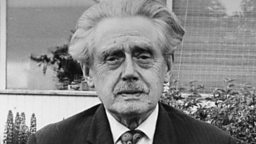AL Kennedy
1965 -
Biography
Alison Louise Kennedy lives and writes in Glasgow's west end. She was born in Dundee in 1965, and attended Dundee High School before moving on to Warwick University from 1983 until 1986, when she took a BA (Hons) in Theatre Studies and Drama. She chose not to study literature, viewing creative writing and criticism as incompatible activities. After university, she returned to Scotland, and from 1988 to 1989 was Community Arts Worker for Clydebank and District.
She maintains an interest in the social applications of the arts, having been writer in residence for Hamilton and East Kilbride Social Work Department (1989-91) and Project Ability (1989-95), an arts and special needs organisation promoting equality of access to the arts, the management committee of which she still sits on. In addition, she has edited numerous magazines and journals, including: Outside Lines magazine (1989-95); New Writing Scotland (1993-95); and New Writing 9 (1999), and is a regular contributor to various newspapers, including The Scotsman, The Herald, The Telegraph and the Guardian. She has also done television and radio work for the ����ý, writing, reviewing and presenting, and wrote the screenplay for 1994 British Film Institute film, Stella Does Tricks.
Her work, both fiction and non-fiction, has been translated into German, French, Dutch and Spanish, illustrating the breadth of her literary appeal. Moreover, her literary gravity has been recognised by that fact that she has won many literary prizes, such as numerous Scottish Arts Council Book Awards, the Saltire Best Book Award (twice) and the Somerset Maugham and Encore Awards. In turn, she has judged various literary prizes herself, including in 1996 the Booker Prize, in 2001 the Guardian First Book Prize, and in 2002 the Orange Prize for Fiction.
Kennedy is a Christian, and often finds a political translation of her personal faith in the peace movement. She regularly attends blockades of the Faslane Nuclear Submarine Base on the Clyde, and has been a vocal critic of the British government's involvement in recent conflicts, in newspaper columns and in speeches made at numerous anti-war demonstrations.
(Last updated in September 2004)
Works
Kennedy's prize-winning first collection of short stories, Night Geometry and the Garscadden Trains, was published in 1990. The volume of fifteen tales ranges over a number of genres and styles from satire to urban realism, tragedy to comedy, and is the book that brought her to the attention of the British literati. For the protagonists of the stories, small incidents have resonant consequences, such as in the eponymous 'Night Geometry and the Garscadden Trains', when the protagonist tells us, 'It was a Garscadden train that almost killed my husband.' In reality, the protagonist's decision not to catch the train to work and return home one morning, finding her husband in bed with another woman, is what nearly leads to his death. The possibilities of what our protagonist will do now that her contrived role of 'wife' is over and how she will cope are left optimistically open.
In another story, 'Playing Dead', the narrator humorously gives ambiguous advice to children on how to play dead. Similarly, the tale of 'Seven Centuries of Scottish Slaughter' displays a morbid wit, and this jet-black humour is evident in much of Kennedy's work, particularly during anxious and troubled times. A whiff of sulphur consistently accompanies her comedy.
This is apparent in Kennedy's second novel, So I Am Glad (1995). The narrator, Jennifer, claims that ‘apart from all the bad things in the world and all the bad things in my head, we were all right’ (222). She is referring to her relationship with the ghost of Savinien de Cyrano de Bergerac, somehow translated from seventeenth-century France into present-day urban Scotland. Savinien is an ambiguous presence, an evasive spirit who is nevertheless intimately physical to Jennifer. The supernatural remains highly ambiguous, a motif in Scottish literature with a lengthy and notable history, stretching back to 's infamous (1824) and beyond. Is Savinien actually supernatural or merely a projection of Jennifer's troubled mind? This conventional tension is radically reworked, as the ‘ghost’ is placed in an almost entirely secular context, and is also in no way malevolent, proving remedial rather than diabolic. Through Savinien's untrained, 'alien' eyes we witness our own familiar world defamiliarised, opening up the possibilities of evaluation, criticism and change. Savinien is both noble and disillusioned, both gentle and capable of great violence, and the portrayal of his intense relationship with the lonely Jennifer, numbed by years of isolation and misunderstanding, represents Kennedy's most beautiful and moving love story, allowing Jennifer to emerge from a traumatised past, to shed the 'ghosts' of her own life.
Preceding and laying the groundwork for the more ambitious So I Am Glad, Looking for the Possible Dance (1993) was Kennedy's first novel. The symbol of the dance, both the literal dances that central protagonist Margaret takes part in with her much-loved father and her estranged partner Colin, and the ceilidh dance she organises, and also the attempt to match the movements of life to its ever-changing rhythms, unifies the various narrative threads. They are brought together in Margaret's constant search 'for the possible dance, the step, the move to beat them all.' And like Jennifer, Margaret is a survivor, ultimately finding her own rhythm.
The 1999 novel Everything You Need tells the story of a comparable but contrasting father/daughter relationship. Mary and her father Nathan have not seen each other for fifteen years, and in fact Mary believes her father to be dead. The novel charts Nathan's re-entry into Mary's life as a writing tutor, and his preparations for telling her of his true identity. Nathan feels they are bound in some spiritual way by their need to create, by 'their capacity for longing' (345). In this novel, Kennedy makes the prosaic and familiar wondrous and exotic, celebrating the small emotions of the individual.
The proximity of violence and intimacy evident in much of Kennedy's other work, in particular So I Am Glad, again provides the dangerous dynamic for her 1997 novella and short story collection Original Bliss. The collection features tales about sex, and moreover about the need for love. The need to bridge gaps, both emotional and physical is portrayed as a universal theme. The eponymous novella 'Original Bliss' is a meditation on desire. The genuinely nice hero of the narrative, Edward Gluck, simultaneously manages to save the damaged and disillusioned housewife Helen Brindle, while achieving gratification from hardcore violent pornography. This paradox of violence and tenderness suggests how tenuous and unsafe the process of healing can be, but also that the process is possible; a faint but warming glow in the dank space of trauma.
Related Links

Writing Scotland themes
-
![]()
by Carl MacDougall





